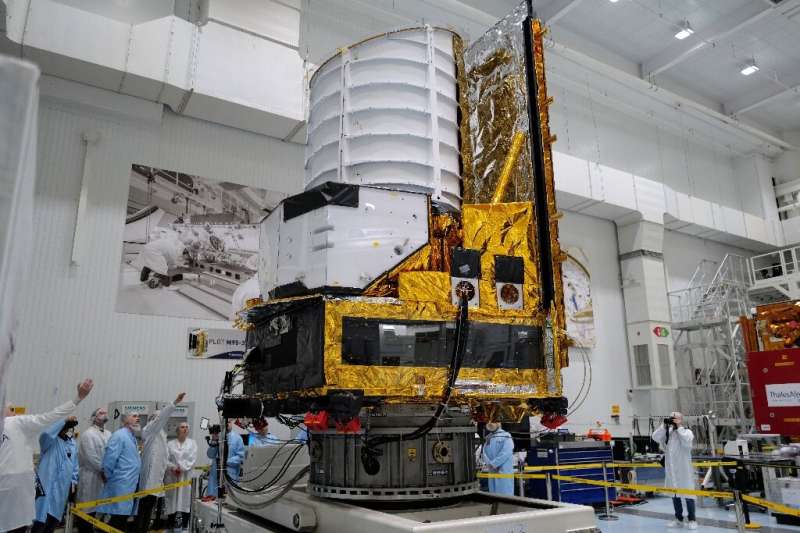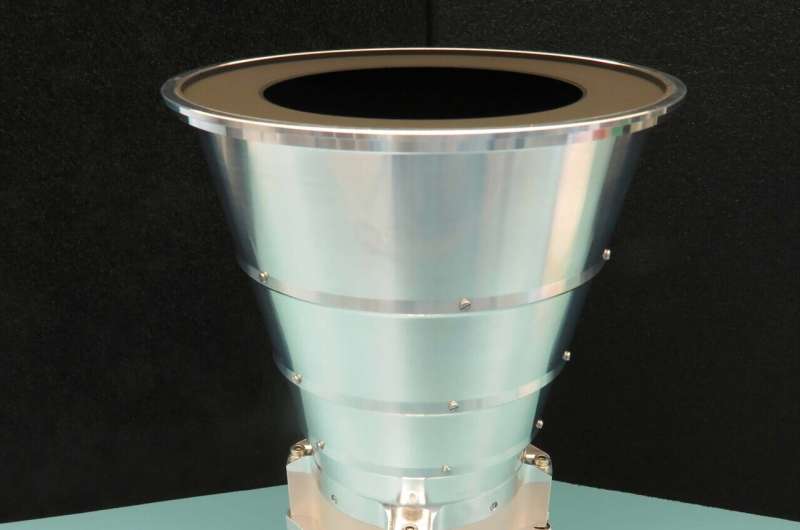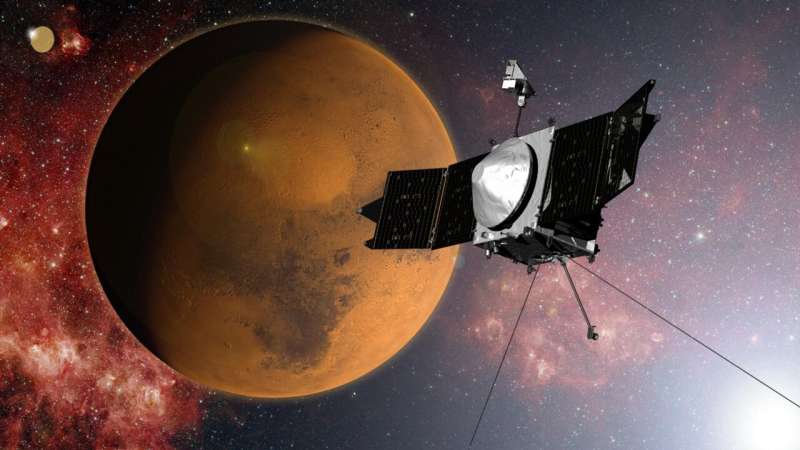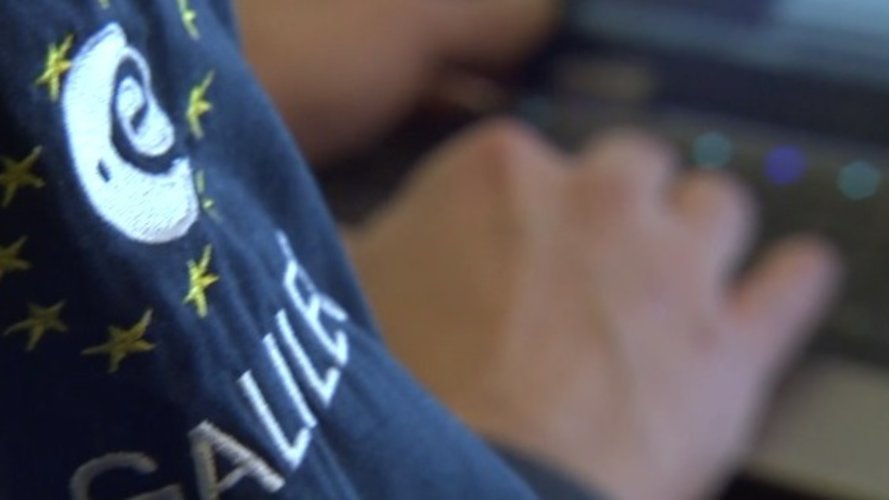
Copernical Team
New study offers insight into how Venus cools
 Large geological patterns on Venus, called Coronae, may provide answers to how the planet releases heat, according to a research study from scientists at NASA's Jet Propulsion Laboratory.
On Earth, the planet's core heats the surrounding mantle which then conveys heat to the outer layer or lithosphere, where it then radiates out into space, causing the Earth's mantle to cool, driving th
Large geological patterns on Venus, called Coronae, may provide answers to how the planet releases heat, according to a research study from scientists at NASA's Jet Propulsion Laboratory.
On Earth, the planet's core heats the surrounding mantle which then conveys heat to the outer layer or lithosphere, where it then radiates out into space, causing the Earth's mantle to cool, driving th ULA's Vulcan Centaur rocket is flying for the first time in May
 Vulcan Centaur was supposed to blast off in the first quarter of this year. During a press conference on February 23, United Launch Alliance (ULA) President and CEO Tory Bruno stated, "We are now targeting the fourth of May, so we plan our manifest around that and be ready to fly that payload when it comes in."
The long-awaited inaugural flight of the new Vulcan Centaur rocket is targeting
Vulcan Centaur was supposed to blast off in the first quarter of this year. During a press conference on February 23, United Launch Alliance (ULA) President and CEO Tory Bruno stated, "We are now targeting the fourth of May, so we plan our manifest around that and be ready to fly that payload when it comes in."
The long-awaited inaugural flight of the new Vulcan Centaur rocket is targeting Russia's uncrewed Soyuz rescue spacecraft docks with ISS
 A Russian spacecraft docked with the International Space Station on Saturday to replace one that leaked coolant after it was struck by a meteoroid last year, stranding two cosmonauts and a NASA astronaut in space.
"Contact and capture. Docking confirmed at 6:58 p.m. CST," NASA spokesman Robert Navias said during a broadcast of the mission. "It could not have gone smoother from launch to
A Russian spacecraft docked with the International Space Station on Saturday to replace one that leaked coolant after it was struck by a meteoroid last year, stranding two cosmonauts and a NASA astronaut in space.
"Contact and capture. Docking confirmed at 6:58 p.m. CST," NASA spokesman Robert Navias said during a broadcast of the mission. "It could not have gone smoother from launch to Euclid spacecraft prepares to probe universe's dark mysteries

For now, Europe's Euclid spacecraft sits quietly in a sterilized room in the south of France, its golden trim gleaming under the fluorescent light.
But in a few months the space telescope will blast off on history's first mission to search for two of the universe's greatest mysteries: dark matter and dark energy.
Though together they make up 95 percent of the universe, almost nothing is known about either—a glaring hole in scientific understanding that Euclid project manager Giuseppe Racca dubbed a "cosmic embarrassment".
Aiming to shed light on these dark secrets, the European Space Agency's mission will chart a 3D map of the universe encompassing two billion galaxies across more than a third of the sky.
Eyes on Hera: Asteroid mission's cameras ready

MAVEN status update

NASA's MAVEN spacecraft entered safe mode on Feb. 16 after encountering an issue with its Inertial Measurement Unit (IMU), which measures the spacecraft rate of rotation for use in determining its pointing. The IMU had been powered up in preparation for a minor maneuver targeted to reduce eclipse durations in 2027.
On Feb.17, MAVEN exited safe mode and is currently operating in all stellar mode, a mode that does not rely on IMU measurements such that the IMU can be powered off to conserve its lifetime. The maneuver will be waived as the team evaluates the path forward. Relay activities and nominal science operations are scheduled to resume on Feb. 23.
MAVEN launched in November 2013 and entered Mars' orbit in September 2014. The mission's goal is to explore the planet's upper atmosphere, ionosphere, and interactions with the Sun and solar wind to explore the loss of the Martian atmosphere to space. Understanding atmospheric loss gives scientists insight into the history of Mars' atmosphere and climate, liquid water, and planetary habitability.
Provided by NASA's Goddard Space Flight Center
ESA invites you to satnav summer school in Sweden

This year’s ESA/JRC International Summer School on Global Navigation Satellite Systems (GNSS) will take place in July in Kiruna, Sweden.
Luxembourg taps into SES's O3b mPOWER for defense and disaster recovery
 Luxembourg has selected SES's O3b mPOWER system to serve as the resilient satcom infrastructure for defense, security, and disaster recovery in the country and beyond. The MEO Global Services program, valued at 195 million euro over 10 years, will enable the acquisition and operation of O3b mPOWER services, pending approval by the Luxembourg parliament.
Luxembourg has selected SES's O3b mPOWER system to serve as the resilient satcom infrastructure for defense, security, and disaster recovery in the country and beyond. The MEO Global Services program, valued at 195 million euro over 10 years, will enable the acquisition and operation of O3b mPOWER services, pending approval by the Luxembourg parliament. The effects of Aurora Borealis on energy grids with the addition of renewables
 As the world transitions toward more renewable energy resources and deals with the consequences of a changing climate, the resiliency of energy infrastructure is becoming ever more urgent. University of Oklahoma researcher Paul Moses, Ph.D., has received a Faculty Early CAREER Development award from the National Science Foundation to better understand how chaotic grid disturbances from events li
As the world transitions toward more renewable energy resources and deals with the consequences of a changing climate, the resiliency of energy infrastructure is becoming ever more urgent. University of Oklahoma researcher Paul Moses, Ph.D., has received a Faculty Early CAREER Development award from the National Science Foundation to better understand how chaotic grid disturbances from events li Colossal sky map shows over one billion glowing galaxies
 The largest two-dimensional map of the sky ever made has grown even larger with the tenth data release from the DESI Legacy Imaging Surveys - a monumental six-year survey covering nearly half the sky. This new data release adds increased sky and wavelength coverage to the already completed surveys made with data from NSF's NOIRLab telescopes at Kitt Peak National Observatory in Arizona and Cerro
The largest two-dimensional map of the sky ever made has grown even larger with the tenth data release from the DESI Legacy Imaging Surveys - a monumental six-year survey covering nearly half the sky. This new data release adds increased sky and wavelength coverage to the already completed surveys made with data from NSF's NOIRLab telescopes at Kitt Peak National Observatory in Arizona and Cerro 
